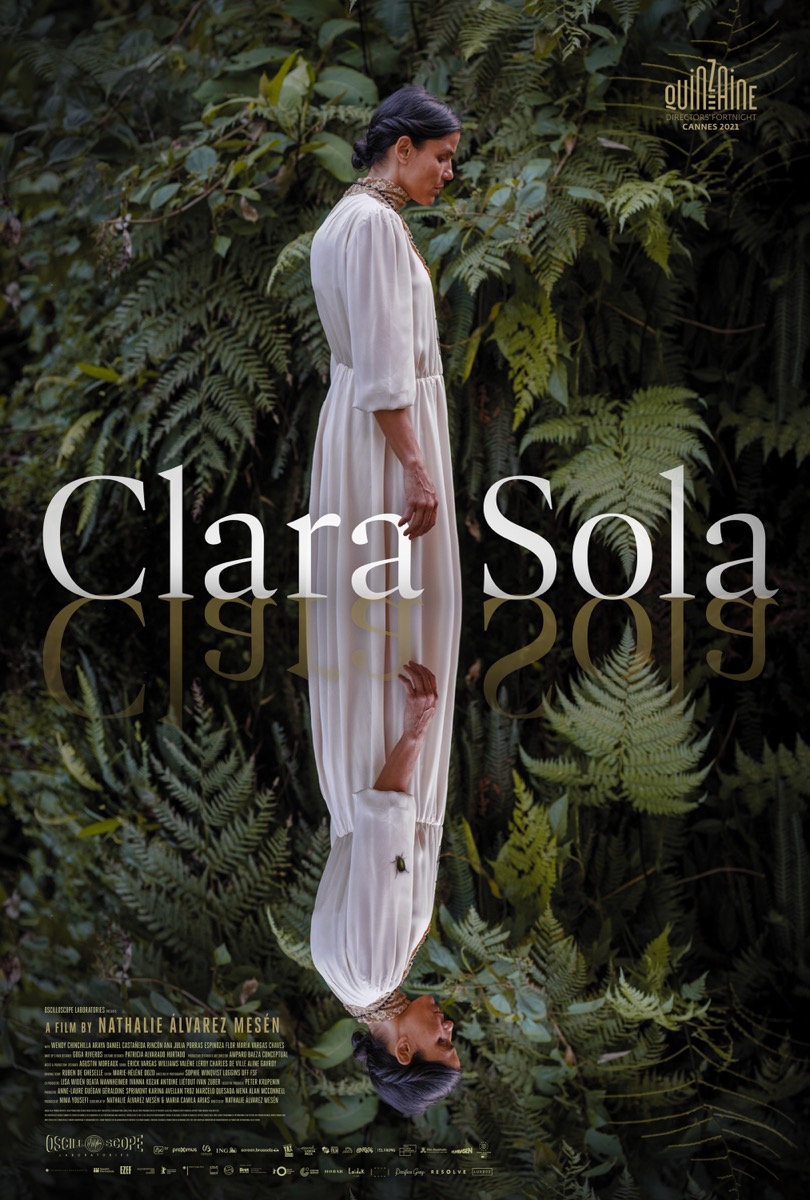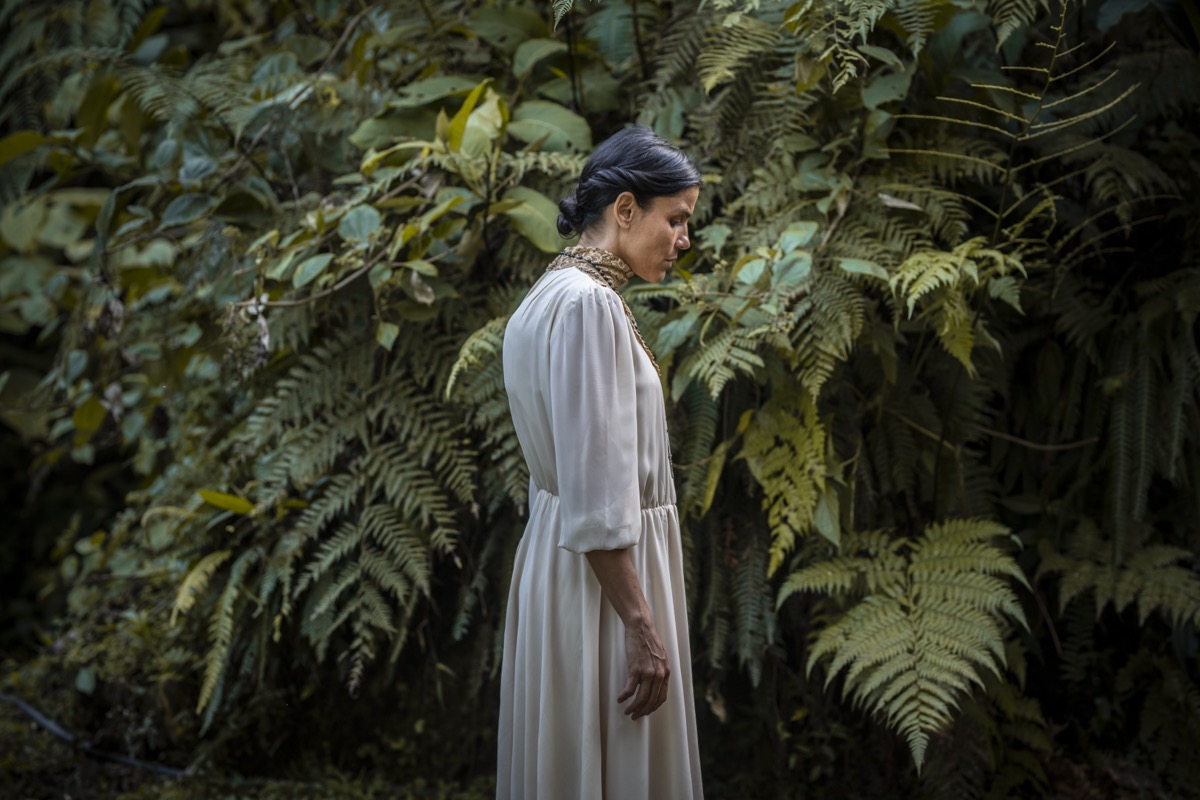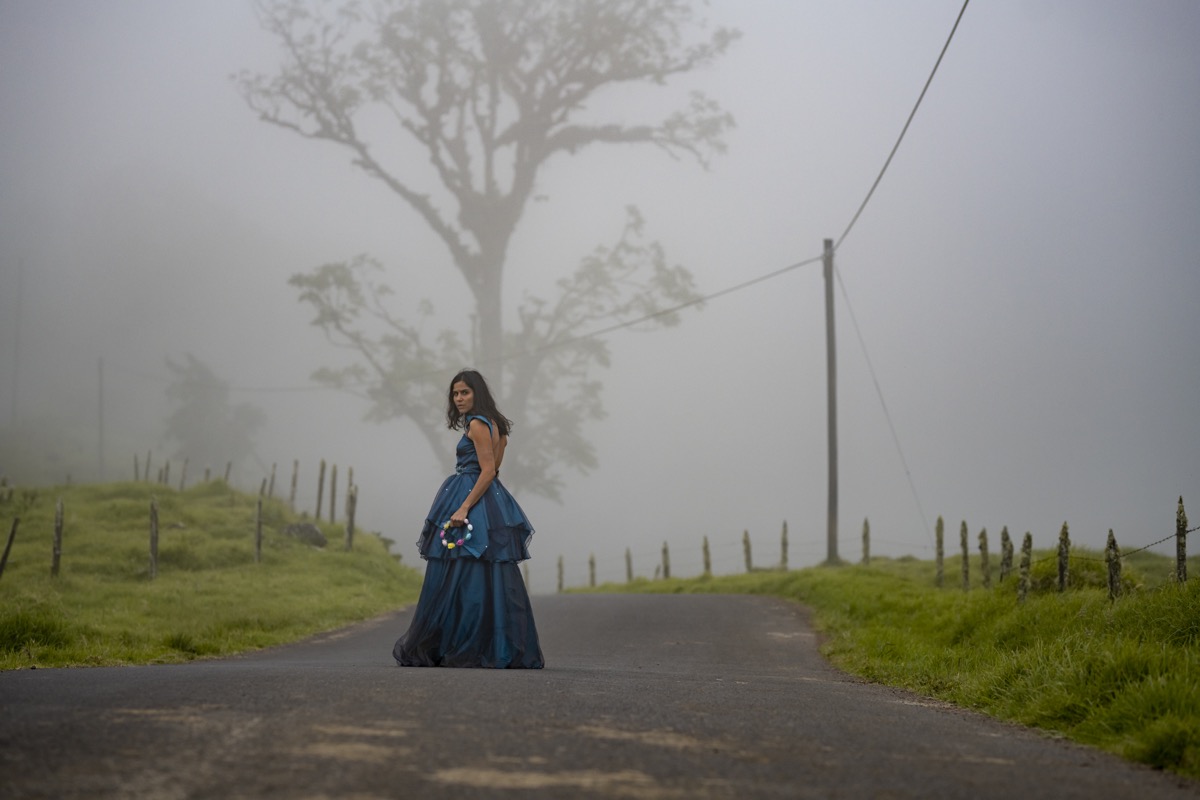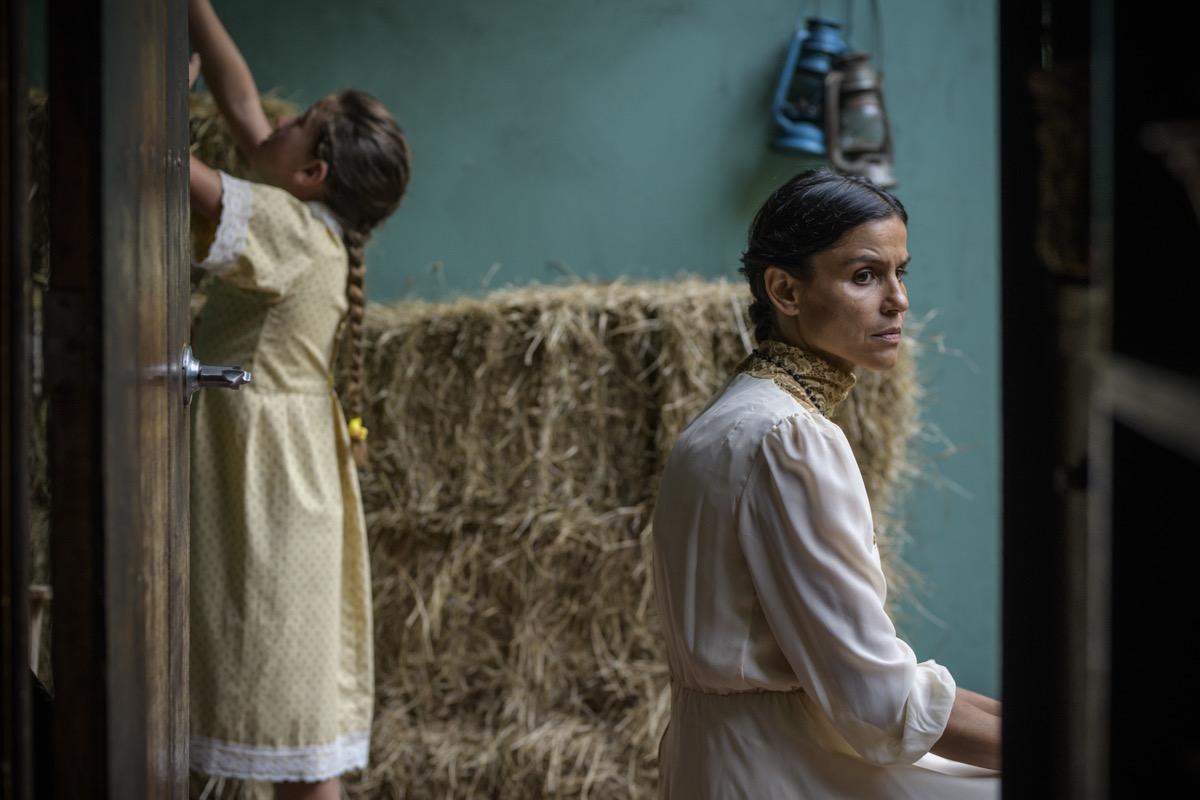
Stories about religious trauma seem to be more and more common in modern cinema. And this is for good reason— religious experience is incredibly varied and individualized, so no person’s circumstances are quite like anyone else’s. Moviegoers in the U.S., a country where most people profess Christianity, have a general awareness of American belief systems. But move very far past the border, and religious customs begin to feel a bit less familiar. And so, when a film like CLARA SOLA comes along, providing an in-depth look at one person’s Christian practice in a remote village of Costa Rica, it’s a wonderfully disarming thing to see.
CLARA SOLA follows Clara (Wendy Chinchilla Araya), a woman with a sincere love for animals and nature, living in a small home with her mother and niece. We learn early in the film that Clara has some sort of supernatural abilities; she can communicate with her beloved horse Yuca, she can ripen berries with a touch, and she can even heal the sick. Her deeply religious mother, Fresia (Flor María Vargas Chaves), is convinced Clara’s abilities come from the Virgin Mary. In one scene, Fresia addresses a small crowd gathered in their living room around a shrine to the Virgin, declaring, “She is with us through my daughter.” A visibly uncomfortable Clara, at her mother’s insistence, prays to Mary on behalf of the people there, asking for physical and emotional healing.
As we get to know Clara, it becomes clear that not only is she uncomfortable with her mother’s dogmatic faith, but she may also have an intellectual disability of some kind. The film never names her condition or even addresses it directly, preferring to let us simply observe Clara and how she interacts with the world and the people around her. This approach works beautifully— by refusing to “explain” Clara, the film allows us to appreciate her on her own terms. In this way, the film also avoids the harmful stereotype of the “magically disabled” person, a problematic style of writing that is often used as a lazy shorthand to make a character seem stronger or more sympathetic to the audience.
At first glance, Clara fits this convention, but the film ultimately doesn’t fall prey to it because of just how firmly grounded we are in Clara’s worldview. Clara doesn’t exist for the audience or for the other characters, on the contrary, she is the center of her own story and we are merely observers of her journey. The camera loves Clara, and she’s so fully realized in the writing and performance, she’s simply too complex to fit any mold of a disabled character that we might be accustomed to.

Without ever putting it in these terms, CLARA SOLA also beautifully illustrates the difference between religion and spirituality. Insects, the soil, and the forest behind her home hold wonder for Clara in the same way the Virgin does for Fresia; it’s Mother Nature vs. Mother Mary, but only one leads her followers to harm other people. One of the most stunning moments in the film takes place in the woods at night, with Clara laying, utterly satisfied, under a tree, the dimly lit scene buzzing with dozens of fireflies.
Another way that writer/director Nathalie Álvarez Mesén shows Clara’s full humanity is in the depiction of her sexuality. An inciting incident in the story is the arrival of Santiago (Daniel Castañeda Rincón), a handsome young ranch hand who moves to the village and soon connects romantically with Clara’s niece Maria (Ana Julia Porras Espinoza). Santiago also befriends Clara and their friendship becomes increasingly significant to her as the story progresses.

Visually, the film is incredibly grounded and naturalistic, with a handful of moments that transcend both in cinematography and in story. A major element of the plot is the blue dress of Maria, who is approaching her quinceañera. The dress comes to symbolize what Maria has and what Clara wants, and the few moments that it appears on screen are some of the film’s finest. Aside from creatively capturing characters and costumes, the camera also manages a meditative quality in its many magnificent images of nature. We see the world through Clara’s eyes, and we come to love the trees, animals, and landscapes just as she does.
The film’s climax impressively raises the tension and emotional intensity as Clara is tested in a number of ways. Wendy Chinchilla Araya’s performance is exceptional throughout, and most especially in the last 20 minutes of the film. The story’s final scene also manages to feel both inevitable and surprising— it took my breath away and solidified CLARA SOLA as one of the most exciting debut features I’ve seen in some time.

Through deep empathy for its lead character, CLARA SOLA manages to defy stereotype and craft a meaningful look at religious trauma and disability. The trick of the screenplay is that it isn’t really about Clara’s abilities at all; any character could go through the kind of religious repression we see depicted and it would be worth watching. But in seeing stringent religion through Clara’s eyes, the problems with her mother’s worldview become all the more stark. All of that remains secondary in the filmmaker’s priorities, though, to ensuring our thorough understanding of Clara’s feelings and desires. Paired with a beautiful aesthetic and impressive performances, Nathalie Álvarez Mesén’s complex and provocative screenwriting make for an unforgettable piece of cinema.






